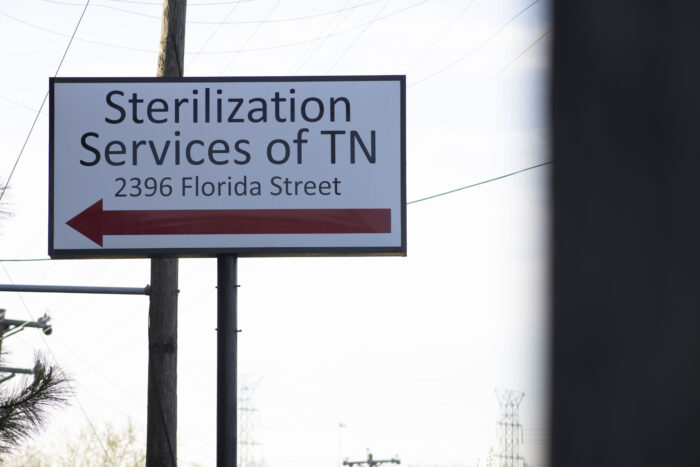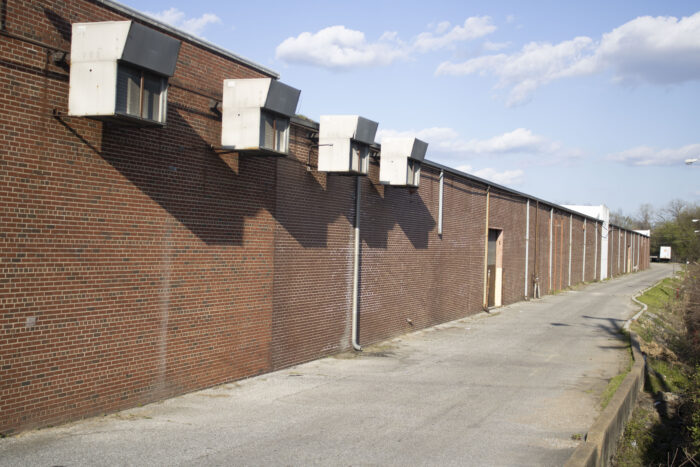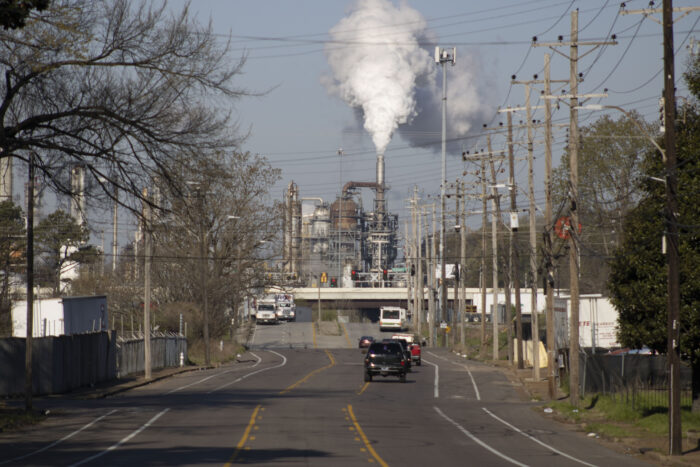The ethylene oxide ‘health emergency’ in South Memphis
Despite the sunny spring day in South Memphis, Rose Sims and her neighbor, Lettie White, made a point to stay inside as much as possible.
“Since the meeting last year, I don’t be outside long,” Sims said.
Five months earlier, Sims, White and dozens of their neighbors packed into a South Memphis church, where the U.S. Environmental Protection Agency held an open house. There, federal officials warned that a nearby industrial facility run by Sterilization Services of Tennessee is emitting dangerous amounts of a toxic, cancer-causing gas: ethylene oxide.

Ethylene oxide, also known as EtO, is linked to leukemia, lymphoma, breast cancer, and stomach cancer, and recently EPA announced that the colorless and odorless gas is 60 times more toxic than they previously thought.
At the meeting, EPA officials cautioned that the Sterilization Services of Tennessee facility – and the ethylene oxide it is pumping into the air – creates an “elevated” cancer risk for people living nearby. Scientists presented maps showing what areas face the highest risks. Both Sims’ and White’s homes fell within the elevated-risk area.
“I was devastated,” White said. “I used to go outside to plant my garden and to cut my yard. I can’t do that anymore.”
“I was afraid, frustrated, scared,” Sims said. “Now I go in and out of my house, but as far as cutting yards and just hanging out and enjoying and barbecuing and being with my family, I would never.”
In the months since the meeting, Sims’ frustration – and fear – has grown as local health officials have refused to act.
A health emergency in South Memphis
For months, Sterilization Services of Tennessee has ignored calls from the Memphis City Council, the Shelby County Commission, community organizations, and families living nearby to reduce the plant’s EtO pollution. The facility, which sterilizes medical equipment, continues to operate 24 hours a day, seven days a week, even though similar facilities in other states have taken voluntary action to reduce ethylene oxide emissions.

That’s why, in February, SELC and Memphis Community Against Pollution sent a letter to the Shelby County Health Department, urging the agency to use its emergency powers to force the facility to lower its EtO emissions. But the health department refused to act.
“Memphis code clearly says that the Shelby County Health Department not only can act, but must act to protect Memphis families from a health emergency,” SELC Tennessee Office Director Amanda Garcia said. “If you ask the families that are afraid to be outside because of ethylene oxide pollution in South Memphis, they will certainly tell you that Sterilization Services of Tennessee is creating a health emergency.”
“South Memphis residents deserve to breathe clean air. If Sterilization Services of Tennessee won’t reduce its toxic ethylene oxide pollution on its own, then the Shelby County Health Department must take action immediately,” Memphis Community Against Pollution President KeShaun Pearson said.
A legacy of injustice
While the Shelby County Health Department drags its feet, residents like Sims can’t help but wonder if Sterilization Services of Tennessee would still be releasing EtO if it were in another part of the county.

“[This facility] would have never went to Collierville. It would have never went to Arlington. It would have never went to Germantown,” Sims said, listing the mostly white suburbs outside of Memphis. “Why would you put this in a Black community?”
Mallory Heights is in the heart of South Memphis, a historically and predominantly Black community. The area is also surrounded by industrial facilities that pollute the community’s air and water.
“When we go to church on Sunday, we have to pass right by all this stuff on the expressway,” White said.
“For decades, families living in South Memphis have been forced to live next door to toxic facilities that pollute our air, our water, and our soil,” Pearson said. “These industrial plants didn’t move here by accident. They moved here because of discriminatory practices like redlining that allowed polluters to take over historic and vibrant Black neighborhoods.”
“Sterilization Services of Tennessee is continuing this legacy of environmental injustice by ignoring community members’ pleas for relief,” Pearson said. “And by allowing the Sterilization Services facility to continue pumping toxic gas into the air, the Shelby County Health Department is sending the message that it’s okay to inflict harm on Black communities.”

EPA action to strengthen protections
In April, EPA took a key step toward better regulating ethylene oxide emissions in announcing a draft rule that aims to reduce fugitive EtO emissions by 80 percent. The rule would force facilities that release ethylene oxide to implement already-available technologies to better protect nearby communities.
While the draft rule proposes additional protections for people like Sims and White, there is still more that can be done. The rule should also include monitoring at commercial sterilizers’ property boundaries, so regulators and neighbors know exactly how much ethylene oxide is escaping into their air.
These [industrial facilities] moved here because of discriminatory practices like redlining that allowed polluters to take over historic and vibrant Black neighborhoods.
KeShaun Pearson, Memphis Community Against Pollution
The draft rule is open for public comment until June 27, 2023.
Even though the EPA rule provides some hope, community members in South Memphis worry that it will take nearly two years for it to be fully implemented. In the meantime, they would be forced to continue breathing the toxic pollution.
“Families in South Memphis have already been forced to breathe in ethylene oxide for decades. They shouldn’t have to wait years for relief,” Garcia said. “The Shelby County Health Department must take action to reduce ethylene oxide pollution now.”
Neighbors left waiting for action

White and Sims said that since the EPA open house last year, friends and family have suggested that they move away. But the women, who have each lived in Mallory Heights for more than 25 years, say that just isn’t an option for them or many of their neighbors who are older or on fixed incomes.
“If I could, I would be gone,” White said.
However, the women say that the Sterilization Services of Tennessee plant can move. And if it chooses not to, then EPA and Shelby County Health Department officials must act to make sure the people living nearby are protected.
“They need to do something,” Sims said. “It’s not fair to us as people that we’ve got to deal with this.”
